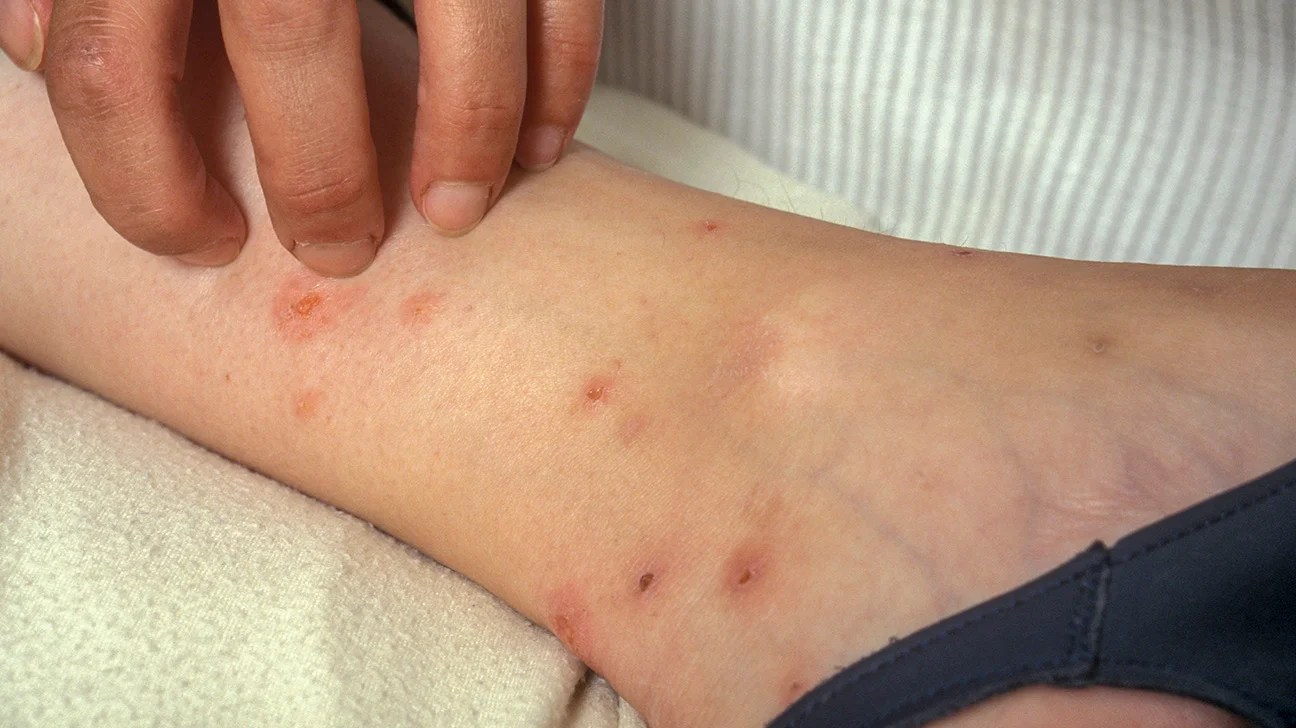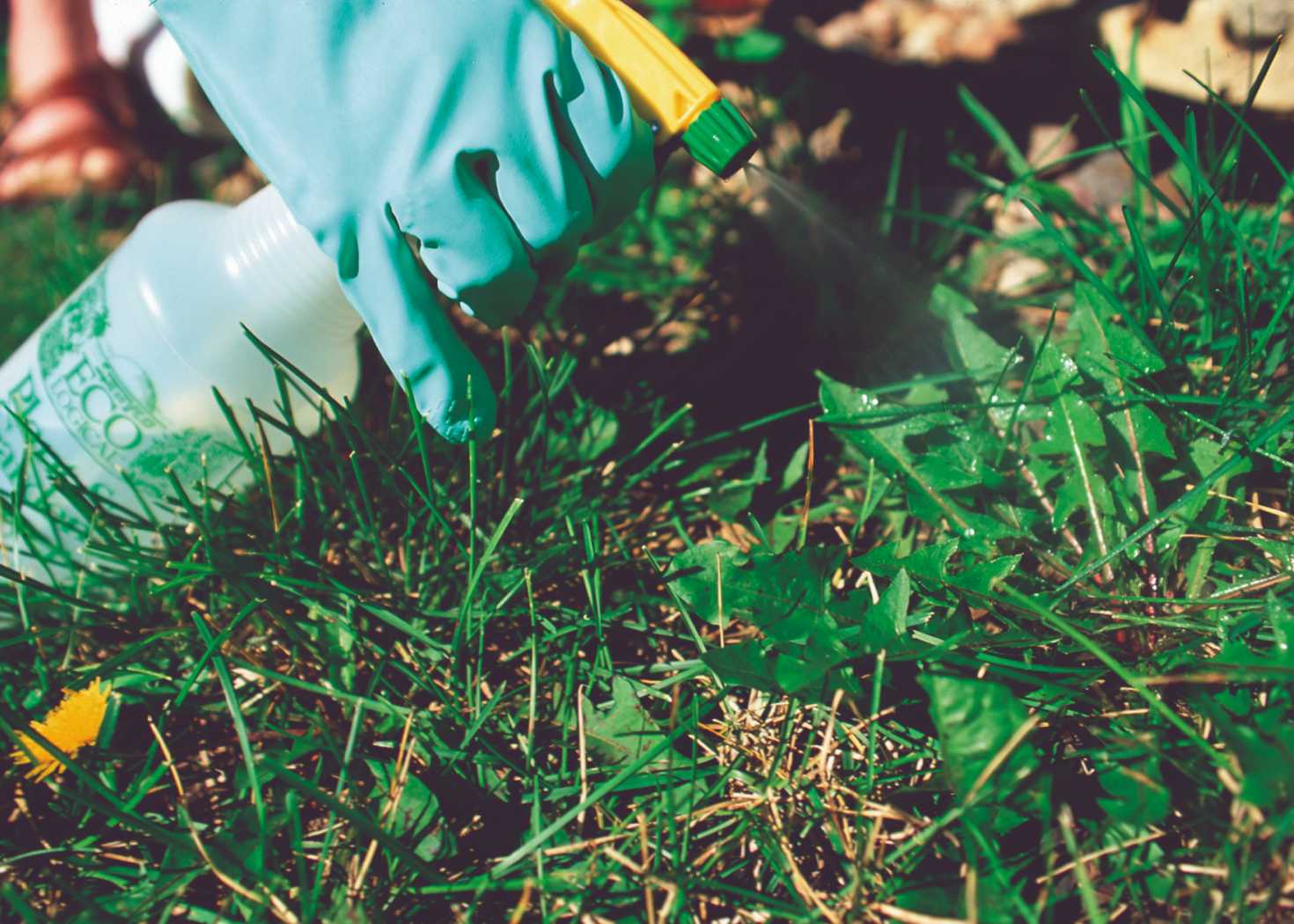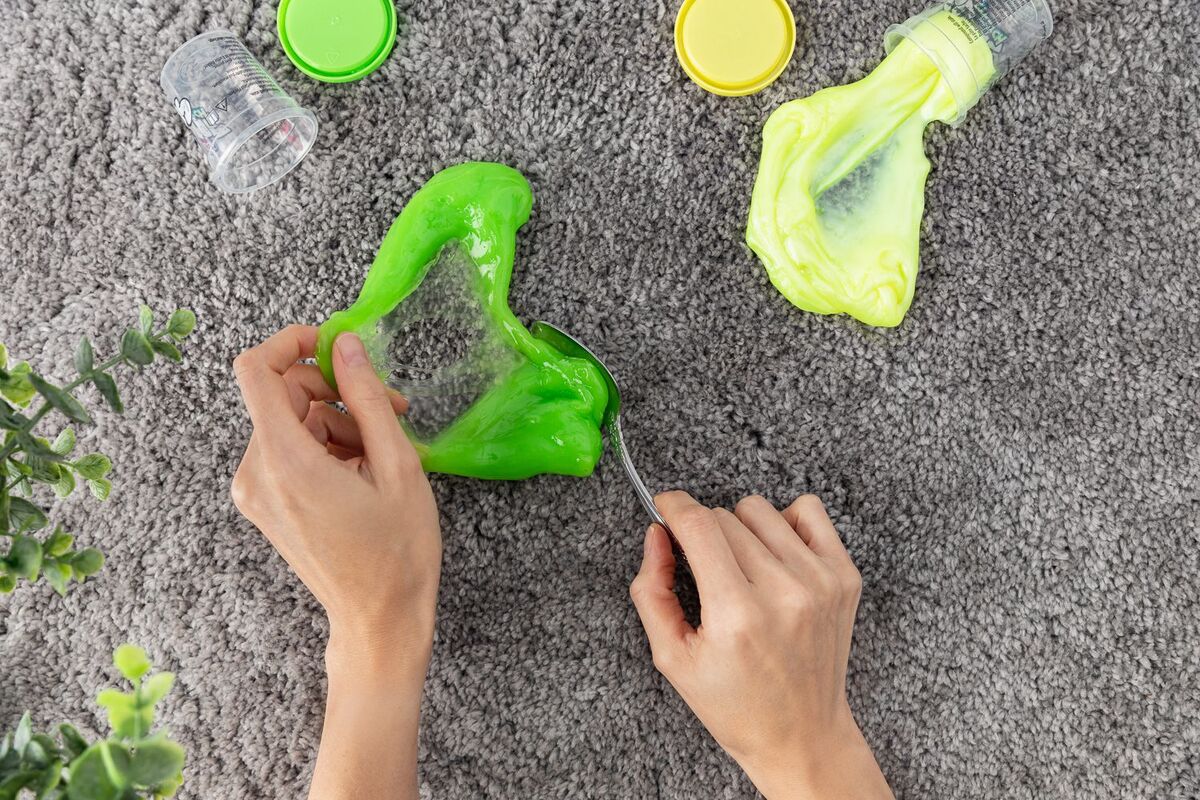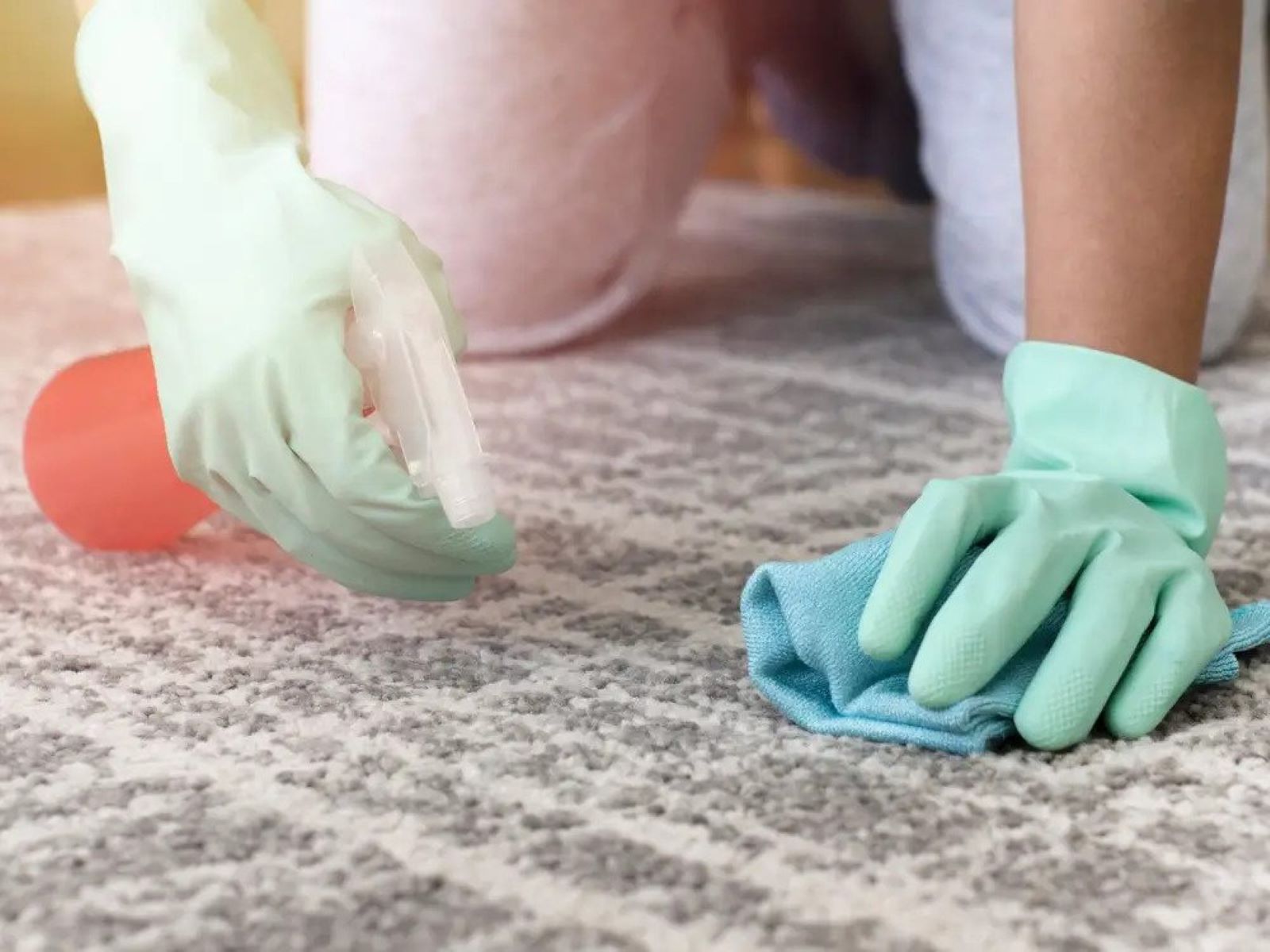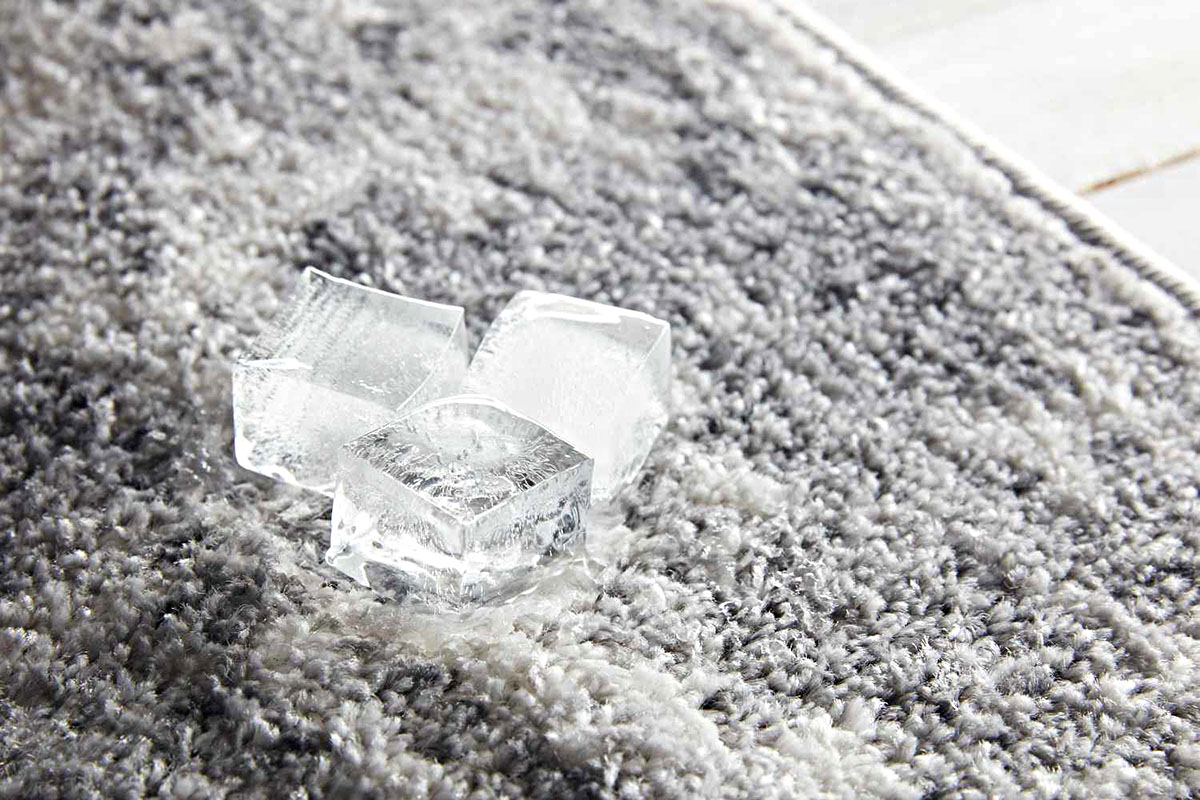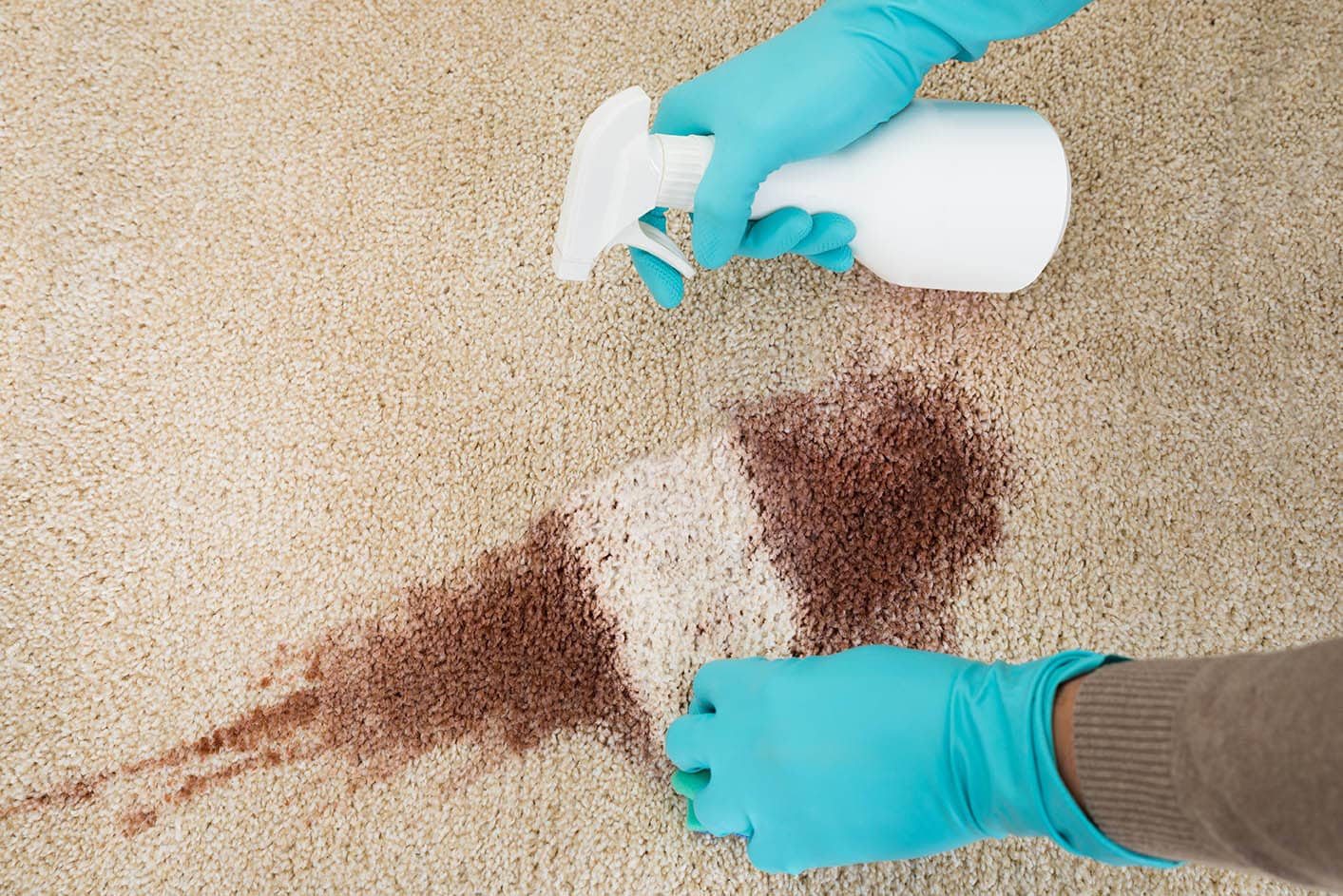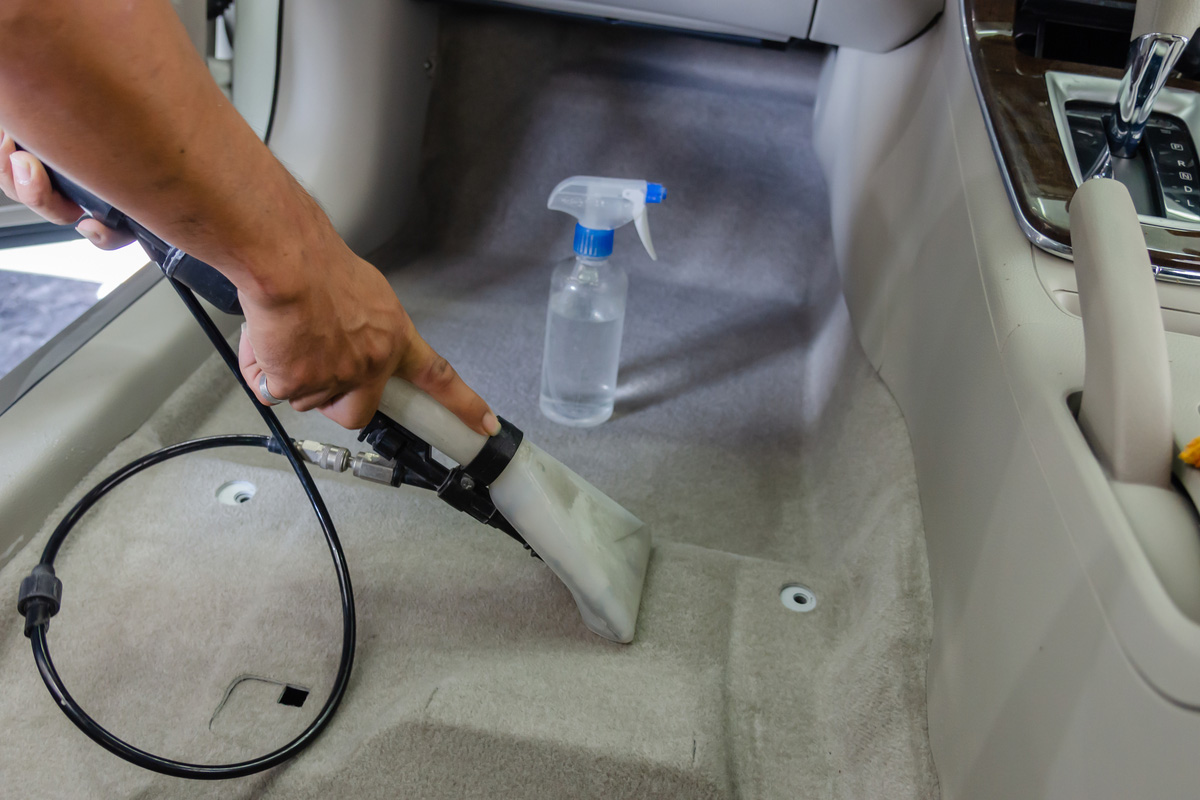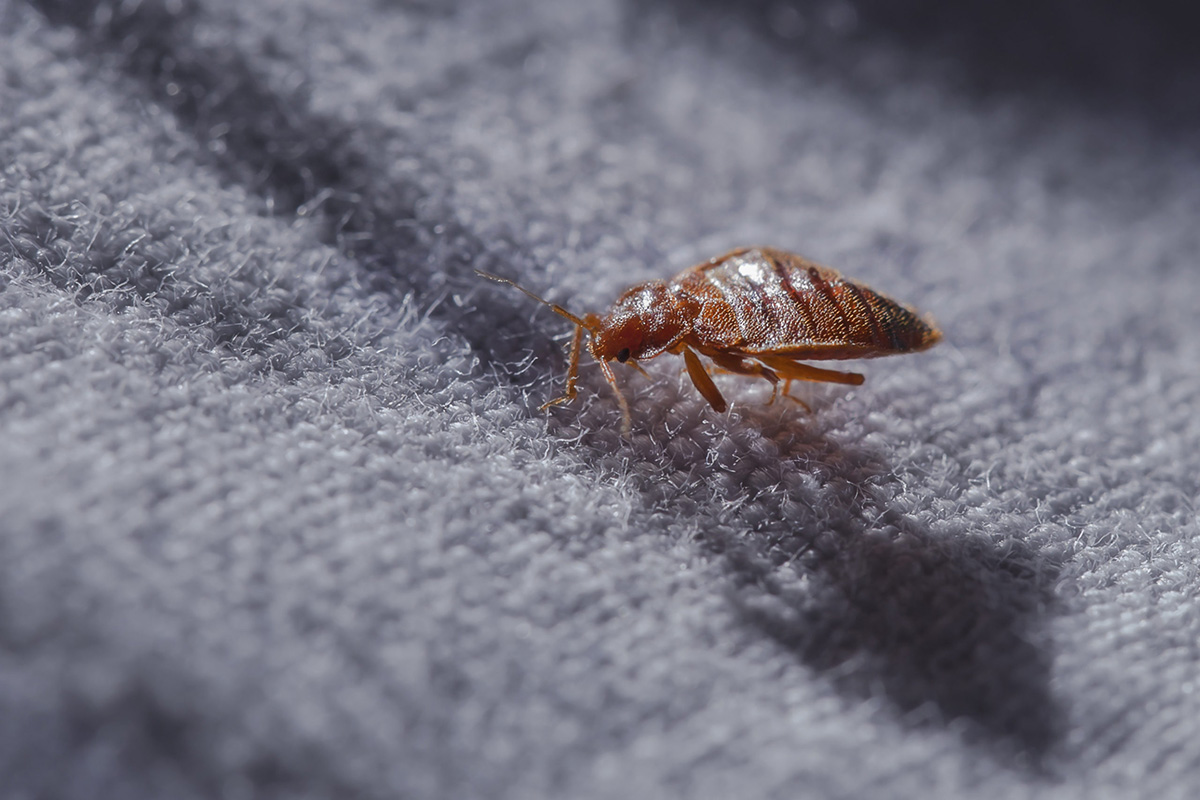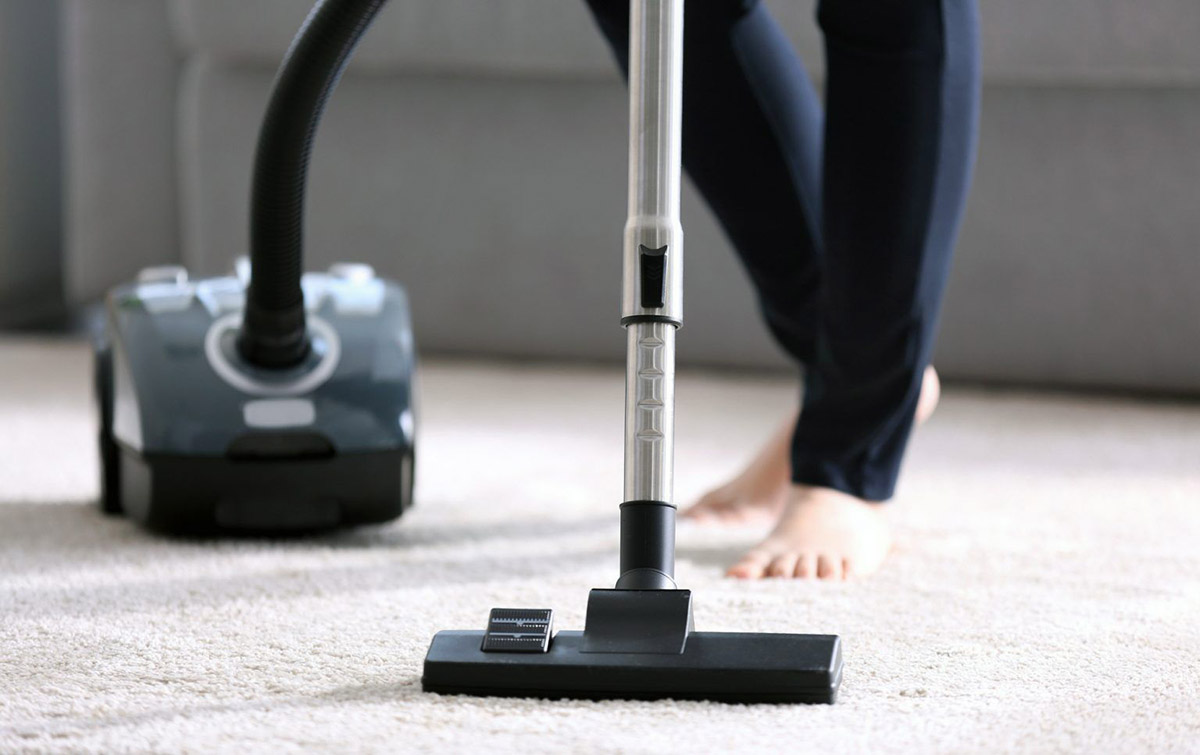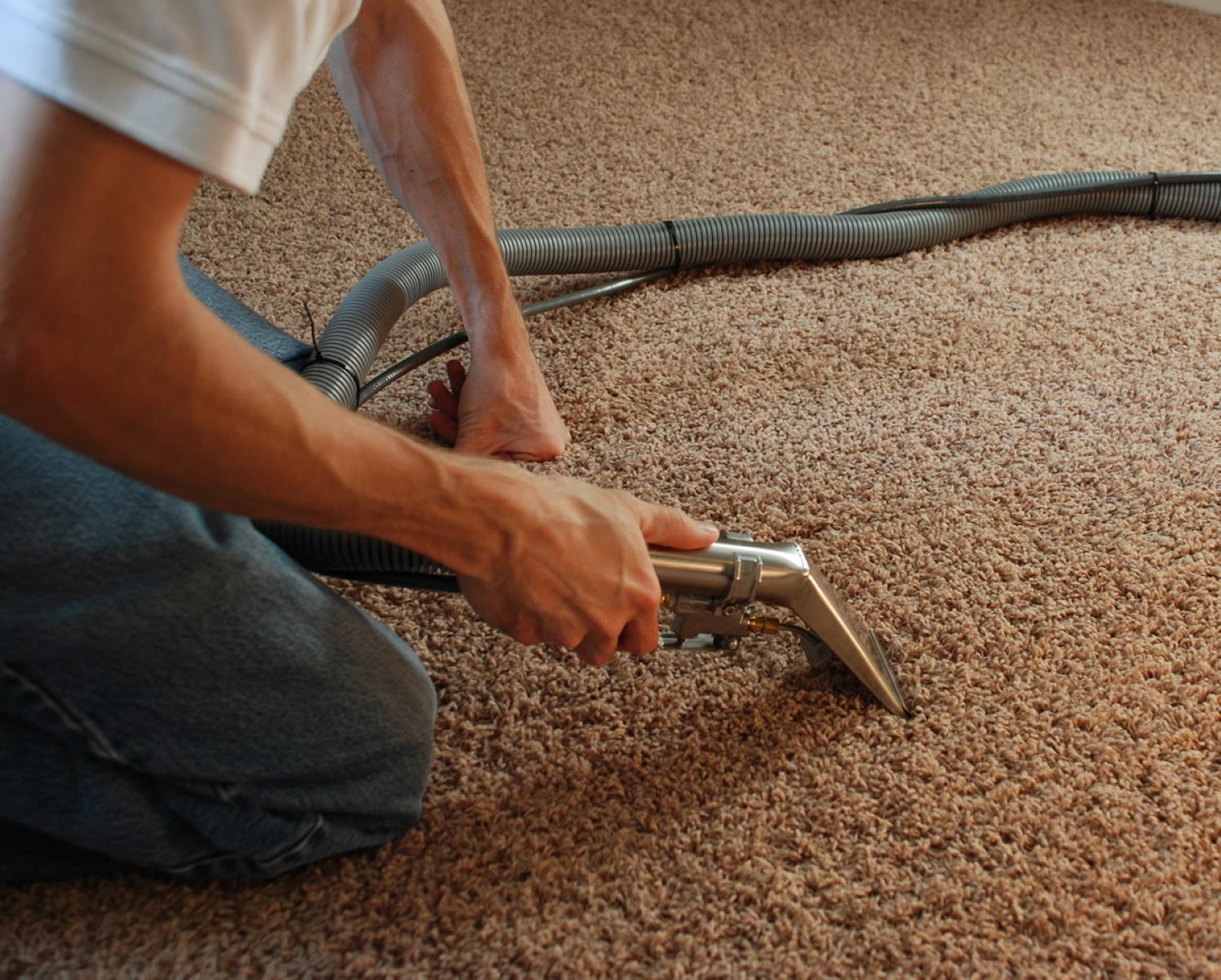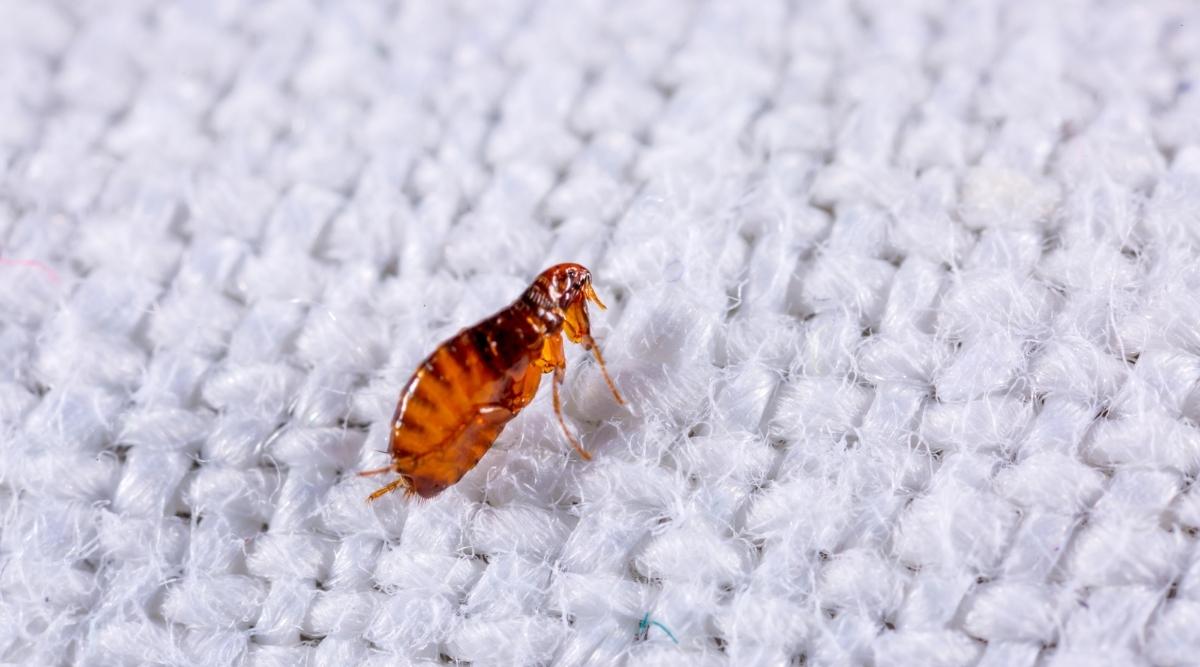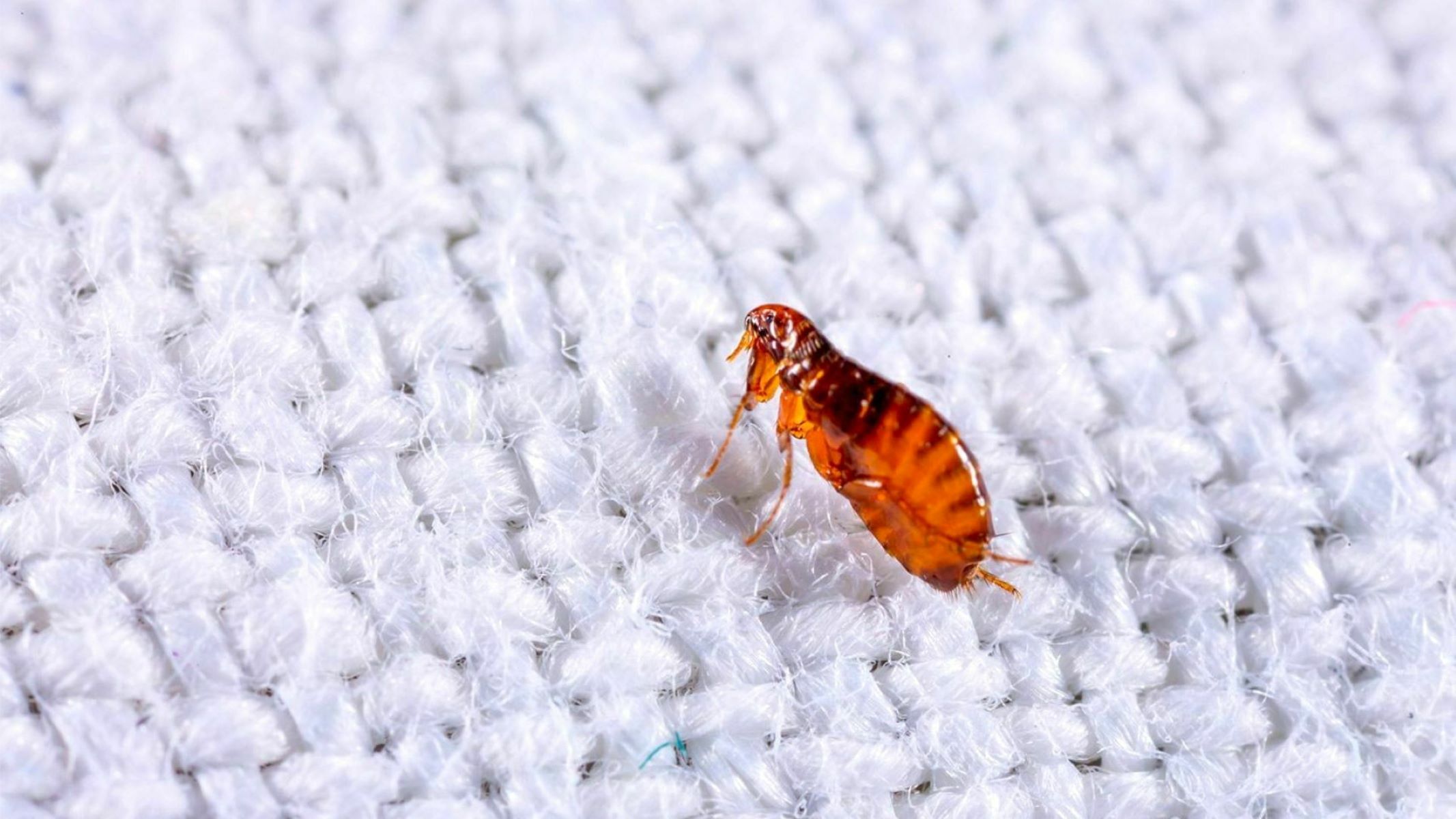

Articles
How To Get Rid Of Fleas In A Carpet
Modified: February 23, 2024
Learn effective methods for getting rid of fleas in your carpet with these informative articles. Say goodbye to those pesky pests once and for all!
(Many of the links in this article redirect to a specific reviewed product. Your purchase of these products through affiliate links helps to generate commission for Storables.com, at no extra cost. Learn more)
Introduction
Fleas are tiny, wingless insects that are notorious for infesting homes and causing discomfort for both humans and pets. One common area where fleas tend to thrive is in carpets, as it provides them with a warm and cozy environment to breed and hide. Getting rid of fleas in a carpet can be a challenging task, but with the right approach and a bit of patience, it is definitely achievable.
In this article, we will explore a step-by-step guide on how to effectively eliminate fleas from your carpet. From vacuuming and using flea sprays to steam cleaning, washing infested items, and sealing cracks, we will cover a range of strategies to ensure that your carpet is free from these pesky pests.
Before we delve into the steps, it is important to note that prevention is key when it comes to dealing with fleas. Regularly grooming and treating your pets for fleas, maintaining a clean home, and being proactive in flea prevention will help minimize the risk of infestations in the first place.
Now, let’s get started on our mission to rid your carpet of fleas!
Key Takeaways:
- Say goodbye to fleas in your carpet by vacuuming, using flea sprays, applying boric acid, steam cleaning, washing infested items, and sealing cracks. Prevention is key to keeping your carpet flea-free.
- When DIY methods fail, consult a professional exterminator for effective flea control. Persistence, patience, and a comprehensive approach are essential for eliminating fleas and maintaining a clean, flea-free carpet.
Read more: How To Get Rid Of Fleas On Carpet
Step 1: Vacuum the Carpet
The first and most crucial step in getting rid of fleas in your carpet is to thoroughly vacuum the affected area. This will not only remove adult fleas but also their eggs and larvae.
Start by clearing the room and ensuring that the carpet is free from any obstacles. This will allow you to cover all areas of the carpet and effectively reach the fleas hiding in the fibers.
Use a vacuum cleaner with strong suction power and a nozzle attachment to reach into corners and along baseboards. Start vacuuming from one corner of the room and slowly work your way across, making sure to cover every inch of the carpet.
Pay extra attention to areas where your pets spend a lot of time, as fleas are often found in higher concentrations in these areas. Move furniture, cushions, and rugs to ensure that you vacuum underneath them as well.
As you vacuum, be sure to go over each section of the carpet multiple times to ensure that you pick up as many fleas and eggs as possible. Focus on both horizontal and vertical movements to dislodge fleas from the carpet fibers.
Once you have finished vacuuming, immediately remove the vacuum bag or empty the canister into a sealed bag. This will prevent any fleas or eggs from escaping and reinfesting your home. Discard the bag in an outdoor trash bin to prevent any potential flea escape.
Repeat this process every day for at least a week, or until you notice a significant reduction in fleas. Vacuuming regularly will not only remove fleas but also disrupt their life cycle, preventing further infestations.
Remember, vacuuming alone may not completely eliminate all fleas, especially if the infestation is severe. This is why it’s important to follow the remaining steps to ensure a comprehensive approach to flea removal.
Step 2: Use a Flea Spray
After vacuuming, the next step in your battle against fleas in the carpet is to use a flea spray. Flea sprays are specifically formulated to kill fleas at all stages of their life cycle, including eggs, larvae, and adult fleas.
Before applying the flea spray, make sure to read and follow the instructions provided by the manufacturer. Some flea sprays require dilution with water, while others can be used directly from the bottle.
Start by removing any items from the carpet, such as toys or small furniture, to ensure even coverage. Open windows and turn on fans to ventilate the area, as some flea sprays may have a strong odor or contain chemicals that could be harmful if inhaled in large quantities.
Hold the flea spray bottle about 12 inches away from the carpet and evenly spray the affected area, making sure to cover the entire surface. Pay extra attention to areas with heavy flea activity, such as pet sleeping areas or areas with visible flea eggs or droppings.
When spraying, be careful not to oversaturate the carpet, as this can damage the carpet fibers or create damp conditions that promote mold growth. Use a sweeping motion and apply a thin, even coat of spray across the carpet.
Allow the flea spray to dry completely before allowing pets or people to walk on the carpet. This usually takes around one to two hours, but refer to the instructions on the flea spray bottle for more specific drying times.
It’s important to note that not all flea sprays are safe for use on all types of carpet. Some products may discolor or damage certain types of carpet fibers, so always test the spray on a small, inconspicuous area before applying it to the entire carpet.
For severe flea infestations, repeat the flea spray treatment every few weeks, or as recommended by the manufacturer, until the infestation is fully eliminated. This will help target any newly hatched fleas that may have survived the initial treatment.
Don’t forget to treat other areas where fleas may be present, such as pet bedding, furniture, and rugs, as these areas can serve as hiding spots for fleas and contribute to reinfestation of the carpet.
By using a flea spray in conjunction with regular vacuuming, you will significantly increase your chances of effectively getting rid of fleas in your carpet and preventing future infestations.
Step 3: Apply Boric Acid
In addition to vacuuming and using flea spray, applying boric acid to your carpet can be an effective way to eliminate fleas. Boric acid is a natural mineral compound that has insecticidal properties and is safe for use around humans and pets when used properly.
Before applying boric acid, make sure to wear gloves and a mask to protect yourself from any potential irritation. Keep children and pets away from the area during the application process.
Start by sprinkling a thin layer of boric acid powder onto the carpet, focusing on areas with high flea activity or where fleas are commonly found. Use a broom or brush to gently work the powder into the carpet fibers, ensuring that it reaches the base of the carpet.
Avoid using excessive amounts of boric acid, as it can be toxic when ingested in large quantities. Always follow the manufacturer’s instructions and use the recommended amount for your specific carpet area.
Leave the boric acid on the carpet for several hours or overnight to allow it to work its magic. During this time, the boric acid will dehydrate adult fleas and prevent the growth of flea larvae and eggs.
After the designated waiting period, thoroughly vacuum the carpet to remove the boric acid residue along with any dead fleas and eggs. Empty the vacuum bag or canister into a sealed bag and dispose of it outside to prevent flea reinfestation.
It’s important to note that boric acid should not be used on wet or damp carpets, as it can cause discoloration or potentially stain the carpet fibers. Ensure that the carpet is completely dry before applying the boric acid.
Repeat the process of applying boric acid and vacuuming every few weeks or as needed, especially if the flea infestation persists. This will help break the flea life cycle and prevent reinfestation of your carpet.
As with any pest control product, it’s essential to use boric acid sparingly and follow safety precautions. If you have concerns about using boric acid or if the flea infestation persists, it’s a good idea to consult a professional exterminator for further assistance.
By incorporating boric acid into your flea removal routine, you can effectively target fleas at different stages of their life cycle and improve the chances of fully eliminating them from your carpet.
Step 4: Steam Clean the Carpet
Steam cleaning is a highly effective method to not only clean your carpet but also get rid of fleas and their eggs. The high temperatures used in steam cleaning can kill adult fleas, larvae, and eggs, providing a thorough and deep cleaning for your carpet.
Before steam cleaning, ensure that your carpet is free from any debris or loose dirt by vacuuming it thoroughly. This will allow the steam cleaner to focus specifically on the fleas and provide optimal results.
Next, fill the steam cleaner with hot water according to the manufacturer’s instructions. Some steam cleaners may also recommend adding a small amount of detergent or a specific flea control solution for enhanced effectiveness.
Begin by slowly moving the steam cleaner over the carpet, making sure to cover each section thoroughly. Pay extra attention to areas with heavy flea activity or where your pets spend a lot of time.
As the steam cleaner releases hot steam onto the carpet, it will penetrate the fibers and reach the depth where fleas and their eggs reside. The high temperature will effectively kill the fleas in all stages of their life cycle, ensuring a thorough elimination.
Take your time during the steam cleaning process to allow the heat to work its magic. Make multiple passes over each section of carpet to ensure that you cover every inch.
Once you have finished steam cleaning, allow the carpet to dry completely before allowing pets or people to walk on it. The drying time may vary depending on the humidity level and the airflow in the room, so be patient and provide adequate ventilation to expedite the drying process.
Steam cleaning your carpet regularly, especially during flea season or if your pets frequently spend time outdoors, can help prevent fleas from establishing a significant presence in your home. It is a proactive measure to keep your carpet clean and free from fleas.
Remember, steam cleaning alone may not completely eliminate all fleas if the infestation is severe or if other areas of the home are also infested. It’s important to follow the remaining steps and take a comprehensive approach to flea control.
By incorporating steam cleaning into your flea removal routine, you can effectively kill fleas and their eggs, ensuring a clean and pest-free carpet.
Vacuum the carpet thoroughly and regularly to remove flea eggs and larvae. Use a flea spray or powder specifically designed for carpets to treat infestations. Wash any pet bedding and treat your pets for fleas.
Read more: How To Get Rid Of Fleas In Furniture
Step 5: Wash and Dry Infested Items
When dealing with fleas in your carpet, it’s important to not only focus on treating the carpet itself but also any infested items that may contribute to the flea population. Items such as pet bedding, blankets, cushions, and other fabric-based items can harbor fleas and their eggs.
Gather all the infested items and separate them into different loads based on color and fabric type. This will prevent color bleeding or damage to delicate fabrics during the washing process.
Start by washing the items in hot water, as the high temperature will help kill fleas, larvae, and eggs. Add an appropriate amount of detergent to the wash cycle and use a regular or heavy-duty setting, depending on the fabric and level of infestation.
After the washing cycle is complete, transfer the items to the dryer and set it to the highest heat setting. The heat from the dryer will further eliminate any remaining fleas or eggs. Make sure to dry the items fully to ensure that no moisture remains, as this can create a favorable environment for flea reinfestation.
It’s important to note that some delicate fabrics or items that cannot be washed or dried at high temperatures may require alternative methods of flea treatment. Consider using a fabric-safe flea spray or consult the manufacturer for specific instructions on how to treat these items.
In addition to washing and drying your pet’s bedding and other fabric items, don’t forget to wash any clothing or fabric materials that may have come into contact with the infested carpet. This will help prevent fleas from being transferred back onto the carpet.
Regularly washing and drying infested items, especially those that are frequently used by your pets, will help break the flea life cycle and prevent reinfestation of your carpet. It is an essential step in comprehensive flea control.
Make sure to continue washing and drying infested items on a regular basis, even after the flea infestation has been eliminated, to maintain a clean and flea-free environment for both you and your pets.
Step 6: Use Flea Traps
While treating your carpet and infested items is essential, using flea traps can provide an additional layer of control and help monitor the presence of fleas in your home. Flea traps work by attracting fleas with a light source or heat and trapping them on sticky pads or in a container.
There are various types of flea traps available on the market, including plug-in traps, sticky pad traps, and DIY traps. Choose the type that suits your needs and follow the manufacturer’s instructions for optimal results.
Place the flea traps strategically around the infested areas of your carpet, such as near the pet sleeping areas, corners, or areas with high flea activity. Make sure to position them away from direct sunlight and any food sources to maximize their effectiveness.
The open design of flea traps allows fleas to be lured in by the light or heat source and become trapped on the sticky pad or within the trap itself. This not only helps reduce the flea population but also provides visual confirmation of the effectiveness of your flea control efforts.
Check the flea traps regularly to monitor the presence of fleas. If you notice an increase in trapped fleas, it may indicate that your carpet still has an active flea infestation, and additional steps may be required.
While flea traps can be a useful tool in managing fleas, it’s important to note that they are not a standalone solution. They should be used in conjunction with other flea control methods, such as vacuuming, applying flea spray, and regularly washing infested items, to achieve optimal results.
Continue using flea traps even after the flea infestation has been eliminated to prevent any potential reinfestation. By monitoring the traps, you can quickly detect and address any new flea activity before it becomes a more significant issue.
Remember, flea traps are most effective when used as part of a comprehensive flea control plan. Incorporating them into your strategy will help keep your carpet and home free from fleas and provide you with peace of mind.
Step 7: Seal Cracks and Crevices
Sealing cracks and crevices in your home is an important step in preventing fleas from reinfesting your carpet. These small openings can serve as entry points for fleas, allowing them to enter your home and make their way into your carpet.
Inspect your home for any cracks, gaps, or openings in walls, flooring, baseboards, or other areas where fleas may be able to access your living space. Pay close attention to areas near windows, doors, and utility openings.
Once you identify these entry points, use caulk or sealant to seal them off. Fill in any gaps or cracks, ensuring a tight and smooth surface. This will help eliminate potential hiding spots for fleas and prevent them from entering your home.
In addition to sealing cracks and crevices, consider installing door sweeps and weatherstripping on doors and windows to create a barrier against fleas and other pests. This will further reduce the likelihood of flea infestations in your home.
It’s also important to regularly inspect and maintain the exterior of your home, including the foundation, siding, and roof. Repair any damage or openings that could provide an entry point for fleas or other pests.
By sealing cracks and crevices, you not only prevent fleas from entering your home but also create a more energy-efficient environment by reducing drafts and heat loss.
Remember, fleas are tiny and can squeeze through even the smallest openings, so be thorough in your inspection and sealing efforts. This step, combined with the previous ones, will help create a more secure and flea-free environment for you and your pets.
Step 8: Consult a Professional Exterminator
If you have followed the previous steps and still find it challenging to eliminate fleas from your carpet, it may be time to consider seeking the help of a professional exterminator. Professional pest control experts have the knowledge, experience, and specialized tools to effectively treat and eradicate fleas.
A professional exterminator will conduct a thorough inspection of your home to assess the extent of the flea infestation. They will identify the areas of highest flea activity and develop a customized treatment plan based on the specific needs of your situation.
Professional exterminators have access to stronger, more effective pest control products that are not available for consumer use. They will apply these treatments to target fleas in all stages of their life cycle, ensuring a comprehensive and long-lasting solution.
By opting for the expertise of a professional exterminator, you can save time and effort while achieving better results. They can provide recommendations on additional preventive measures to avoid future flea infestations.
When choosing a professional exterminator, it’s important to do your research and select a reputable company with a track record of successful flea control. Read reviews, ask for recommendations, and inquire about their methods and guarantees.
Before the exterminator arrives, make sure to follow their instructions on preparation, such as removing pets, covering food items, and clearing the treatment areas. This will ensure a smooth and effective pest control process.
Remember that professional pest control services should be considered as a last resort when all other DIY methods have failed. They offer a comprehensive approach to flea control and can address more severe infestations that may be difficult to handle on your own.
By consulting a professional exterminator, you can gain peace of mind knowing that your carpet and home are being treated by experts who have the knowledge and tools to effectively eliminate fleas and prevent future infestations.
Read more: How To Get Rid Of Grass Fleas
Conclusion
Dealing with fleas in your carpet can be a frustrating and challenging experience, but with the right approach, you can successfully eliminate these pesky pests and restore a clean and comfortable living space for you and your pets.
Throughout this step-by-step guide, we have covered various effective methods to get rid of fleas in your carpet. From vacuuming and using flea sprays to applying boric acid, steam cleaning, washing infested items, sealing cracks, and consulting a professional exterminator, each step plays an important role in achieving a flea-free environment.
Remember, prevention is key when it comes to flea control. Regularly groom and treat your pets for fleas, maintain a clean home, and be proactive in preventing infestations. Early detection and prompt action will help minimize the impact of fleas on your carpet and overall home environment.
Incorporate these steps into your flea removal routine, tailoring them to fit your specific situation and level of infestation. Remember to follow product instructions, use protective gear when necessary, and take safety precautions to ensure a successful and safe flea control process.
It’s important to note that persistence is key when dealing with fleas. Multiple treatments and continued vigilance may be necessary, especially if the infestation is severe or if other areas of your home are also affected.
By taking a comprehensive and proactive approach to flea control, you can ensure that your carpet remains clean and free from fleas. Protecting your home from these unwelcome pests will lead to a healthier and more comfortable living environment for you, your family, and your beloved pets.
Remember to consult professional exterminators when needed, as they can provide specialized knowledge and advanced treatments to address more challenging flea infestations.
With patience, perseverance, and the right strategies in place, you can effectively eliminate fleas from your carpet and maintain a flea-free home for the long term.
Frequently Asked Questions about How To Get Rid Of Fleas In A Carpet
Was this page helpful?
At Storables.com, we guarantee accurate and reliable information. Our content, validated by Expert Board Contributors, is crafted following stringent Editorial Policies. We're committed to providing you with well-researched, expert-backed insights for all your informational needs.
